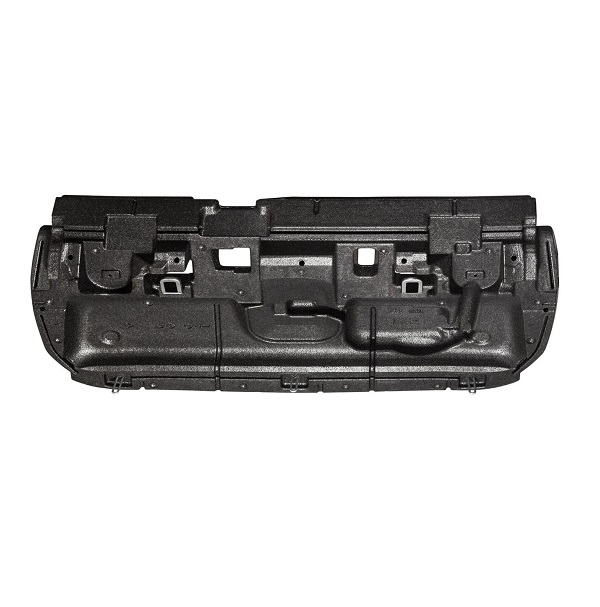WHAT IS OVERMOLDING AND HOW DOES THE PROCESS WORK?
Industry 4.0 uses advanced technological solutions to meet the needs of today's supply chain. One of them is overmolding, a technology for joining two or more materials in a single injection molding process without the use of an additional binder. This makes it possible to create very specific parts with enhanced performance.
Overmolding has a huge impact on reducing the cost of manufactured parts. Combining materials with different parameters, especially in the case of plastics, is not always possible. Therefore, when looking for new solutions of this type, it is necessary to rely on the extensive experience of engineers, technologists and material scientists, who are able to properly select the type and form of raw material to be used. Moreover, the overmolding process works not only in the area of state-of-the-art materials but also allows combining innovation with robustness.
Frequently, the end result of overmolding is to produce a structurally coherent component that bonds a steel structure to EPP foam. Expanded polypropylene is a raw material that is characterized by low weight, yet high strength. On top of that, it provides excellent cushioning, making it an effective support for the steel frame. It is also distinguished by excellent flexibility – it can be formed into virtually any shape. For car manufacturers, the above-mentioned parameters are simply invaluable. The design of vehicles using such a material becomes much simpler, and the structure itself, especially the interior of the vehicle, can promote the ecology of driving. Another advantage is the optimization of production and the possibility of supplying components with ideal parameters, thanks to the overmolding process.
USE OF OVERMOLDING SERVICES
Overmolding is a process used in many market sectors. One of its major strengths is the ability to create components with well-defined parameters, shapes or designs. The details are of considerable importance not only in terms of aesthetics, but also in terms of the final specification of the product. Overmolding makes it possible to obtain a structure that is distinguished by a very strongly defined boundary between the materials used. It is also distinguished from other methods by its high precision and durability.
One type of overmolding services is the overmolding of metal inserts with plastic. Depending on the desired parameters of the final component, such a method can help optimize the cost of producing parts. The use of overmolding in various industrial sectors also contributes to speeding up the production of specific components. By pairing this technology with modern Industry 4.0 solutions and the use of analytics such as DFM (Design for Manufacturing), it is possible to significantly reduce the time to market for a given product, as well as increase production flexibility by being able to make mold adjustments.

HIGH EFFICIENCY OF OVERMOLDING
Overmolding has high efficiency and ensures perfect performance of the final component. Its implementation in the technological process can bring great added value. Among the benefits are:
- improving the durability and resilience of the elements,
- enhancing the visual qualities of solutions,
- reducing the weight of components.
These elements are particularly important in the automotive industry.

OVERMOLDING AND THE AUTOMOTIVE SECTOR
The overmolding process is often used in the production of components for car seats. Such parts are mostly used in structures such as steel frames of car couches, for example. Their combination with EPP foam guarantees high strength and wear resistance but is not associated with a significant increase in vehicle weight. The aforementioned features of the elements made by the overmolding process are highly desirable in this case. However, it is worth mentioning that this method is mainly opted for by manufacturers expecting the highest possible level of quality, as it is a relatively difficult process to implement. Injection-molded automotive components in this case are of considerable size, and the part designs themselves require consideration of mathematical models of how materials behave during vehicle movement.
Preparing the tools to enable overmolding and coordinating production presents many challenges. However, the successful implementation of this technological process with the appropriate knowledge and support from trusted partners can have a significant positive impact on vehicle performance. The systematic development of innovations related to foamed polypropylene is also beneficial from the perspective of manufacturing ecology. It is a material that is recyclable and allows free adaptation of parameters to the needs of a given design, thus reducing the costs associated with malfunctioning manufacturing processes.

OVERMOLDING EXPERTS – WHY CHOOSE KNAUF AUTOMOTIVE'S MODERN SOLUTIONS?
Our extensive knowledge, access to state-of-the-art tool shops working with our experts, as well as extensive experience gained through the implementation of innovative processes, allows us to efficiently support the coordination and design of components created using overmolding.
DOWNLOAD CASE STUDY OF COOPERATION IN ONE-STOP-SHOP MODEL
At Knauf Automotive, we attach considerable importance to ensuring that such demanding processing methods are able to deliver the highest possible added value to the customer. For many years, we have been working with components made using plastics, such as EPP foam automotive parts. The injection molds we develop are the result of a multidimensional analysis, during which we study the behavior of the material in question in the customer's design. Overmolding of metal components is a process that requires appropriate, extremely advanced facilities – we believe we can provide them.